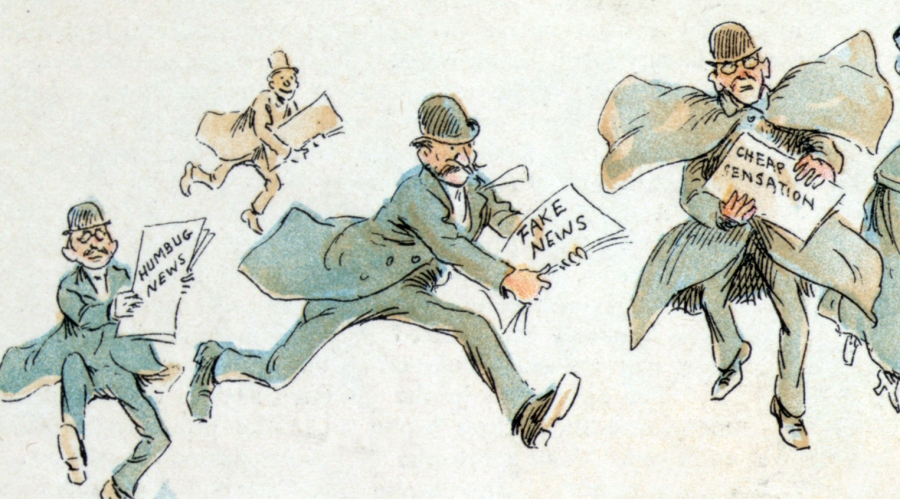
Fake news is an inaccurate, sometimes sensationalistic report created to gain attention, deceive or damage a reputation. It is published to look like authentic news and spread via traditional print and news media or social media.
Unlike misinformation, which is inaccurate because a reporter has confused facts, fake news, which has no basis in fact, is presented as being factually accurate
Claire Wardle of “First Draft News” identifies seven types of fake news:
- satire or parody – no intention to cause harm but has the potential to fool when shared out of context.
- false connection – when headlines, visuals or captions don’t support the content
- misleading content – misleading use of information to frame an issue or an individual
- false context – when genuine content is used in the wrong context
- impostor content – when genuine sources are mixed with false, made-up sources
- manipulated content – when genuine information or imagery is manipulated to deceive
- fabricated content – news that has been fabricated deliberately to either make money through number of clicks, to deceive and do harm. to cause confusion or discontent or as sensationalist propagand
“The International Federation of Library Associations and Institutions” suggested seven ways to recognize fake news. Its main points are:
- Consider the source (to understand its mission and purpose)
- Read beyond the headline (to understand the whole story)
- Check the authors (to see if they are real and credible)
- Assess the supporting sources (to ensure they support the claims)
- Check the date of publication (to see if the story is relevant and up to date)
- Ask if it is a joke (to determine if it is meant to be satire)
- Check your own biases (to see if they are affecting your judgement)
- Ask experts (to get confirmation from independent people with knowledge).
Sicuramente un argomento uptodate bisogna essere piuttosto bene informati per non cadere in fake news molto sottili.
Vorrei sottolineare che il punto 2 e il punto sei si possono equiparare in quanto falsa connessione o contenuto manipolato nella sostanza si equiparano utilizzando lo stesso meccanismo.
C’e una giornata di sole a Roma che tuttavia pare essere l’ultima prodromo di un grande freddo artico 😫😫😫
LikeLiked by 1 person
Grazie per la precisazione!
… e godiamoci il tepore finchè ne abbiamo la possibilità 🙂
LikeLike
qui zanzarissime e aria afosa di pioggia.
Primo teuccio della stagione.
shera 👭🏽
LikeLiked by 1 person
💗⭐️
LikeLike
Excellent post. I plan to re-blog on eQuips. Thanks for sharing. Pat
LikeLiked by 2 people
Thank you, Pat 💗⭐️
LikeLiked by 1 person
I have a golden rule for news: I look at seven news outlets from seven different countries and try to glean a “majority opinion.” However, all news outlets have become propaganda outlets for the causes or political viewpoints they support. Too often journalists forget their own golden rule: Editorials belong on the third page, not on the front page above the fold.
LikeLiked by 3 people
Thank you for your thorough comment.
LikeLike
Fake news bring about misconceptions.
LikeLiked by 2 people
You are right!
LikeLike
[…] via Fake news […]
LikeLiked by 1 person
Thank you for reblogging
LikeLike
Trust and Verify is my mantra.
LikeLiked by 1 person
Such a wise thought!
LikeLiked by 1 person
Great entertaining factual post.😊💕☕
LikeLiked by 1 person
Thank you for your kind words. I’m so pleased you enjoyed this post
☕☕☕
LikeLike